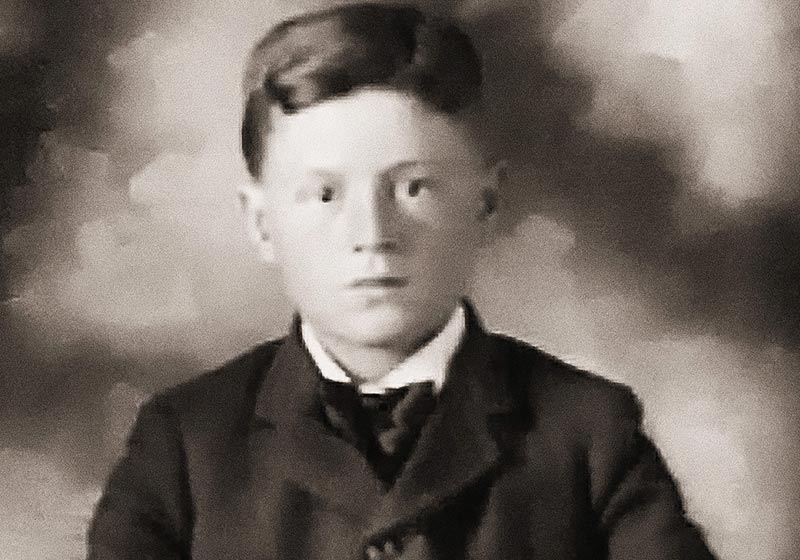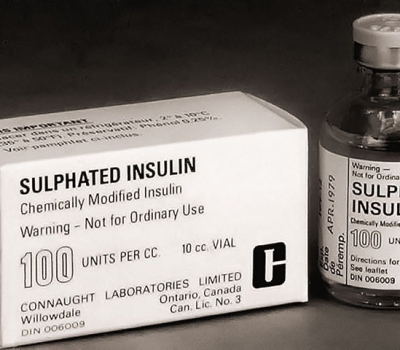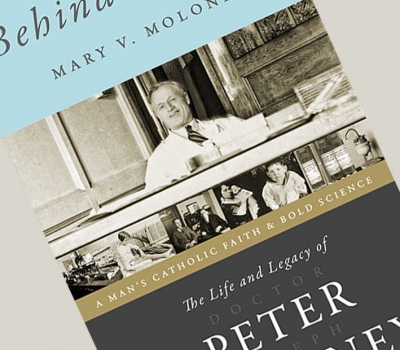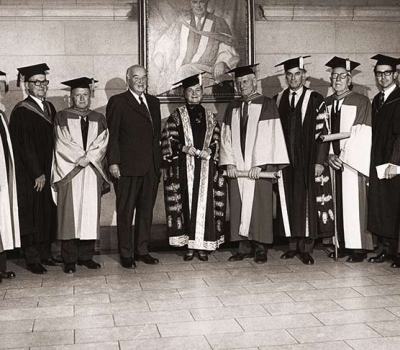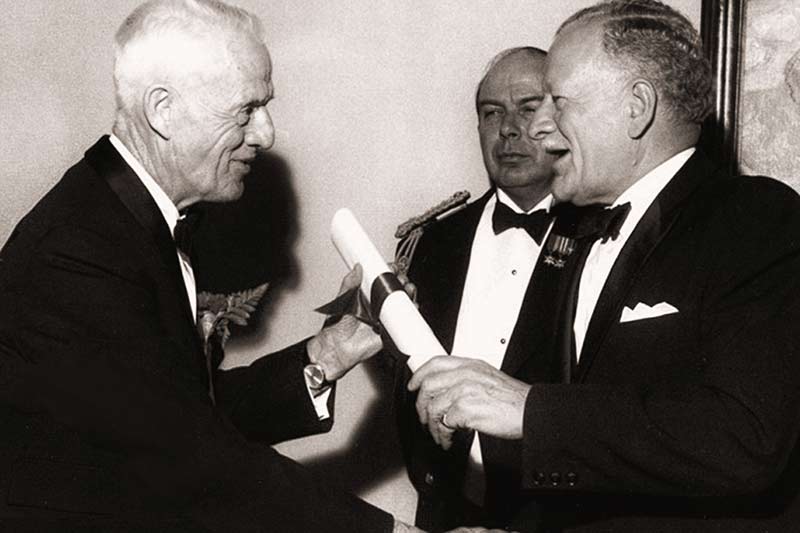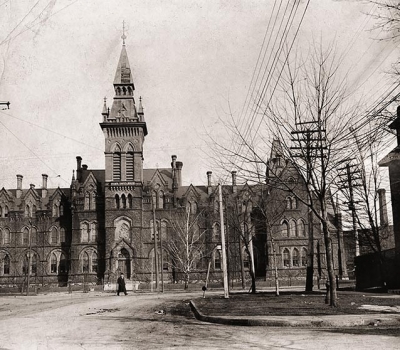Although Banting and Best discovered insulin, they did not have the know-how to purify it. It was Dr. Peter Joseph Moloney who was to successfully purify the first large amount of insulin for the world market, using a technique he brought to the Toronto lab from his earlier work, thus securing fame for Banting and Best.
He was also the one, told by Fitzgerald, to "drop everything and start producing diphtheria toxoid", a very dangerous procedure, who gave North America and eventually the world, diphtheria toxoid, first discovered by Gaston Ramon in France. He also invented the quick acting pH electrode. He won the Gairdner Award, and many more awards, including the Order of the British Empire for producing a gas gangrene antiserum during the second World War.
-- Biography written by Edward A. Synan, F. R. S. C.:
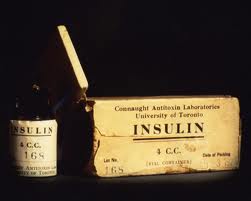 Peter Joseph Moloney was born in Penetanguishene, Ontario, on 29 June 1891; on 12 August 1989, he died in Toronto. When he was two years old his father undertook the management of a hotel in Powassan, Ontario, and moved his family to the town of which Peter was to say in an extreme old age, “I can almost claim to be still a citizen of Powassan.”
Peter Joseph Moloney was born in Penetanguishene, Ontario, on 29 June 1891; on 12 August 1989, he died in Toronto. When he was two years old his father undertook the management of a hotel in Powassan, Ontario, and moved his family to the town of which Peter was to say in an extreme old age, “I can almost claim to be still a citizen of Powassan.”
His formal education began when he was five in Powassan’s two-room two-teacher elementary school of that period. Since the district was then without a high school, a local teacher conducted a “Continuation School” at which Moloney studied a number of high school subjects. At sixteen he registered at St. Michael’s College, Toronto. There he completed studies preliminary to matriculation and then passed into the degree programme of the University of Toronto as a member of one of the first St. Michael’s classes to do so. After a course that honoured the arts of the quadrivium with physics, chemistry, biology, and mathematics along with those of the trivium, English, French, Latin and Philosophy. Moloney received his B. A. in 1912; he won the prize for mathematics and had played on a championship football team.
In 1915 he earned the M. A. and in 1924 the Ph. D. in chemistry, both at the University of Toronto. Moloney spent the year 1915-1916 on a bursary in the University of California at Berkeley where he met and married a university student, Angelina Chapman; their children are Mary, Henry, Oliver, John, and Peter.
Moloney’s first appointment was to the Department of Agriculture in Ottawa 1917-1919. From Ottawa, he returned to Toronto where he was to spend the rest of his long life. There he received a double appointment: Professor in the School of Hygiene and staff member of the Connaught Medical Research Laboratories. At the second of these institutions he would serve as Assistant Director, 1925-1961. On his statutory retirement Moloney was retained by “Connaught Laboratories Limited” in the roles of consultant and active researcher. For as long as it was possible for him to work he was provided by Connaught with both laboratory access and assistants whom he accounted highly qualified, an arrangement that perdured into his late eighties.
Moloney was a member of the American Chemical Society, the British Biochemical Society, the Canadian Physiological Society, the Canadian Society of Immunologists, the Canadian Federation of Biological Societies, the Royal Society of Canada, and the Michaelmas Conference.
From the beginning his research reflected the cooperative cast of modern scientific work, intensified by generosity in evaluating the accomplishments of others. Moloney’s first paper, published with F. T. Shutt, stems from his work in the Department of Agriculture; his long career in Toronto began with work on diphtheria and diabetes. From 1921 until 1963 diphtheria was among the objectives of his published research; with C. B. Weld he succeeded in producing the first diphtheria toxoid in North America and in devising a reliable reaction test, widely known as ‘the Moloney Test”. As a member of the Banting-Best team that developed the practical use of insulin against diabetes, Moloney contributed in 1923 a method of using benzoic acid for the concentration and purifying of insulin as well as a method of removing insulin from carbon, research done with D. M. Findlay 1923-1924. He had already received wide acclaim for his development in 1921 of a quick acting hydrogen electrode for determining the acidity of broths in connection with the culture of bacteria.
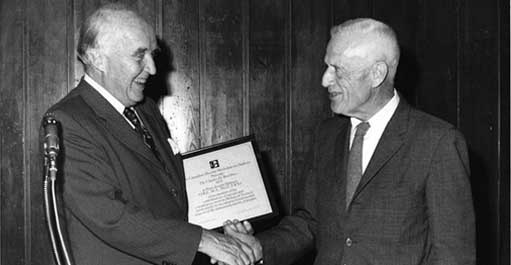 It is not without interest that Moloney’s first two papers were published in the Transactions of the Royal Society of Canada; they would be followed by sixteen more in this journal, and his life-time publications numbered eighty-four. Work on aspects of diphtheria extends in those papers to 1964; work on insulin to his last scientific publication in 1973. During Moloney’s last years his attention seemed to be dominated by aspects of immunology, above all with respect to insulin resistance and to problems raised by insulin as antigen, an issue reviewed in the last but one of his papers in 1972. During those final years he spoke most frequently of his work with A. L. Tosoni, but the list of his collaborators is long; to those mentioned might be added almost forty more names of those who published with him.
It is not without interest that Moloney’s first two papers were published in the Transactions of the Royal Society of Canada; they would be followed by sixteen more in this journal, and his life-time publications numbered eighty-four. Work on aspects of diphtheria extends in those papers to 1964; work on insulin to his last scientific publication in 1973. During Moloney’s last years his attention seemed to be dominated by aspects of immunology, above all with respect to insulin resistance and to problems raised by insulin as antigen, an issue reviewed in the last but one of his papers in 1972. During those final years he spoke most frequently of his work with A. L. Tosoni, but the list of his collaborators is long; to those mentioned might be added almost forty more names of those who published with him.
That impressive publication record is paralleled by his patents of methods for producing insulin, registered with Canada and the United States, as well as one on the production of heparin, a method devised in collaboration with E. M. Taylor and registered in seven countries. Moloney’s last application for a patent was made in his ninetieth year.
These achievements earned him enviable marks of recognition. In 1936 he was elected Fellow of the Royal Society of Canada; for work on a gas gangrene antiserum during World War II he was awarded the Order of the British Empire. In 1964 he received the Banting Medal, and, in the same year the Charles Mickle Fellowship for having ‘done the most during the preceding ten years to advance sound knowledge of a practical kind in medical art of science,” a line that might be taken to characterize his life work. Moloney was given the Gairdner International Award in 1967; in 1971, the first Charles H. Best Medal, an Hoechst Prize, and, along with six other surviving members of the original Banting-Best team who had made practicable the use of insulin against diabetes, an LL. D. honoris causa, from the University of Toronto. Finally in 1977, the Connaught Laboratories Limited named “The Moloney Building” in his honour.
Most important of all, Peter Moloney was marked by faith – faith in his fellow scientists whom he defended consistently against accusations of in-fighting, faith in Canada, faith in his Church. Like the Louis Pasteur of legend, Moloney believed as does a Breton peasant. The even stronger faith of that peasant’s spouse Peter Moloney willingly ascribed to his own wife, Angelina.
Source: Transactions of the Royal Society of Canada/Series VI/Volume II/1991
FACT SHEET (from science.ca)
- Birthdate: June 29, 1891
- Birthplace: Penetanguishene, Ontario
- Date of Death: August 12, 1989
- Place of Death:Toronto, Ontario
- Residence: Toronto, Ontario
- Family Members:
-
- Father: Thomas Henry Moloney, Irish immigrant
- Mother: Elizabeth Byrnes
- Spouse: Angelina Chapman from Los Angeles, California
- Children: Mary, Henry, Oliver, John, Peter
- Personality: Humble, dedicated to family and work, known as a raconteur. Had a gentle wry sense of humour.
- Favorite Music: Anything classical, liked to hum through his lips
- Other Interests: Anything his children were doing, would walk with them after work and discuss their interests
- Title: Assistant Director of Connaught Laboratories, U of T campus, Professor of Biochemistry in the School of Hygiene, U of T
- Office: University of Toronto
- Degrees:
-
- BA (general arts) University of Toronto, 1912
- MA, 1915
- PhD (chemistry) 1923
- Awards:
-
- Order of the British Empire, 1946
- Banting Medal, 1964
- Charles Mickle Fellowship, 1964
- Gairdner Award for his long and distinguished career, 1967
- Charles Best Medal, 1971
- Hoechst Prize 1971
- Mentor:
-
Dr. John Gerald Fitzgerald, first Dean of Medicine, University of Toronto
Read article on SCIENCE.CA

